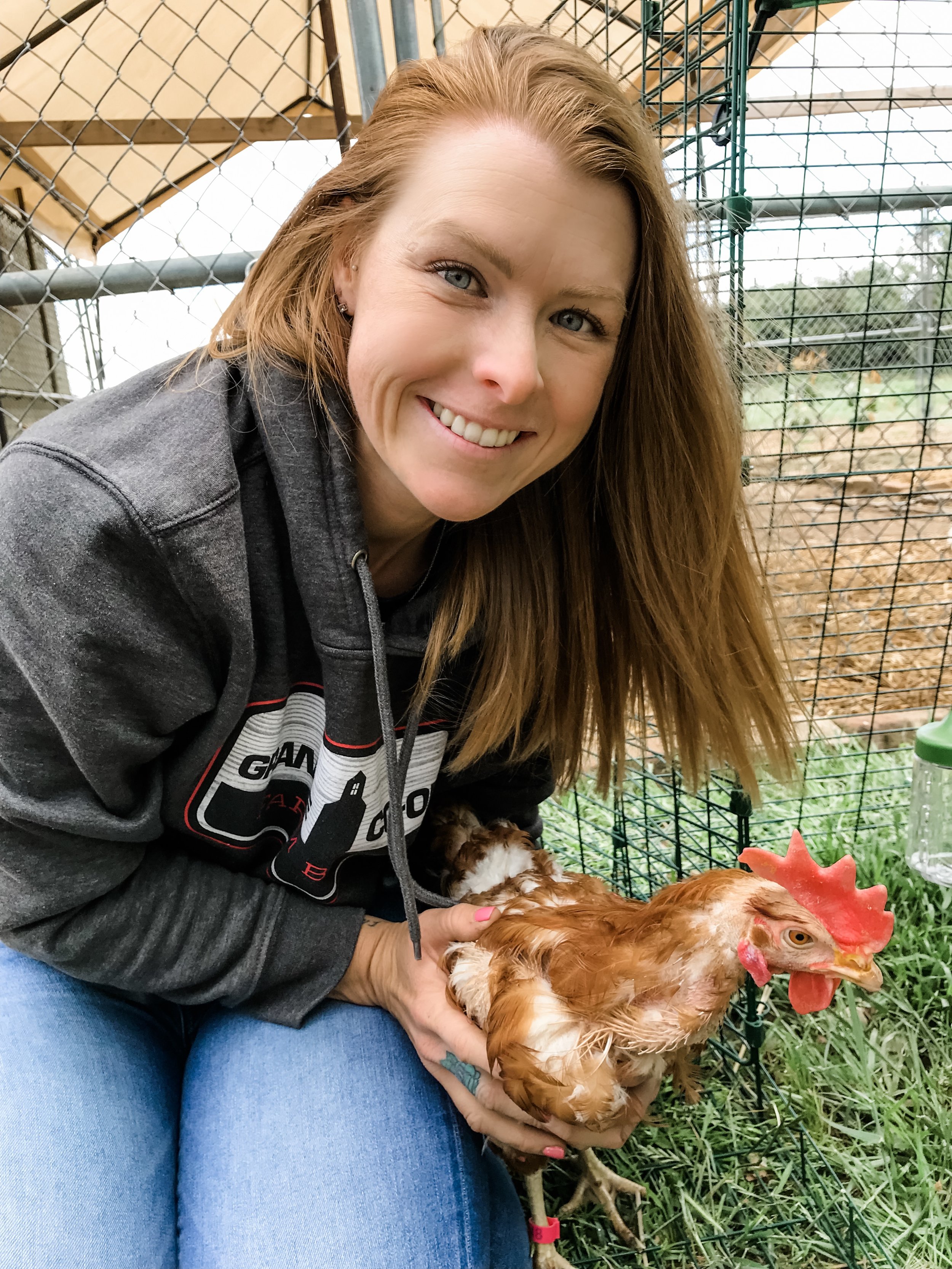Ex-Battery Hens
On May 26th I brought home 8 ex-battery hens. Since then I have been blown away by the response from everyone. You are all cheering the girls on and helping me provide the best life for them.
I want to say thank you to Omlet for providing a safe and amazing coop for the hens. The Omlet Eglu is ventilated, insulated, has a 6ft run, and is a chicken tractor! Meaning I can easily move them around to keep them on fresh grass. This gift has been a true blessing because I could not have brought these lady’s home without knowing they would have their very own coop.
I also want to say thank you to Grubbly Farm for providing all the grubbly treats these little ladies can eat! Grubblies are grown in the USA and provide much-needed calcium to help with stronger eggs, and protein to help with healthy feather growth! If you see one photo of these girls you’ll see they need as much help with feather growth as they can get!
Last but not least, I want to thank all of YOU! So many of you have donated money to help support these ladies. I had an extremely successful naming fundraiser, but that didn’t stop you all. I’ve received money donations that have already helped me purchase supplies and medicine, and I’ve even received direct feed donations. I cannot thank you all enough! If you wish to donate to directly help these ladies you can CLICK HERE.
About Egg Factories and Battery Hens
I'm going to do my best to state facts and not my biased opinions. I’m not an expert, and my research has been limited, but this is a little bit about what I have learned so far.
First of all, what are ex-battery hens? These 8 hens were rescued from an egg factory where “battery cages” were used. Battery cages are used worldwide as housing for laying hens. They’re rows and rows of cages, connected together, like an artillery battery.
My understanding is that these hens have lived their lives in cages, pretty much from day one. There are multiple chickens per cage, they have access to food and water but will never leave the cage. They don’t always have room to stretch their wings and legs, they do not have access to dust baths, and normally are in a controlled light setting.
At a day old the chicken’s beak is trimmed. Looking at my own hens I can tell you some get a little cut on the tip, and some look severely mutilated. The pros are believed to be, birds cannot peck each other, helping with feather pulling, cannibalism, and stress. Cons are, they may not be able to eat and drink properly, short term pain, or chronic pain, and stress. (hmmm interesting)
Screen shot from United Egg Producers website.
If the beak happens to grow back, they are allowed to re-trim them at 5-8 weeks old.
Farms are allowed to induce molting, which is believed to extend the life of the bird and help with egg production. If the birds don’t molt they're “terminated” at 18-21 months. If they molt they can make it until 27 months.
So why are they terminated at 18-21 months on the average? Because their egg production drops by 20%. Meaning they ideally lay 250 eggs their first year, and after their second year they lay closer to 200 eggs. After termination, their meat will normally go to animal food, sometimes for human consumption.
Over the past few years, there has been an effort to improve the chickens living conditions. Before 2015, there were about 64 square inches per bird. That’s an 8x8 square. I believe the current law is 116 square inches per bird, which is less than one square foot.
I hope this has provided some basic information on egg factories for you. Like I said, I wanted to do my best to give facts. I will be writing multiple blogs over the next few months to share the journey of my hens with you. Please subscribe to be notified when new blogs are up!
How to get involved
There are multiple ways you can help
If you can provide a home for chickens, I highly recommend searching for a rescue in your area. I started by googling chicken rescues in California. I personally got my chickens through Hen Harbor, they are 3 hours away from me and worked with volunteers to help transport the birds. Even if you don’t find a rescue right next door, reach out and see if transport is possible.
Can’t have chickens?
Get a Shirt. I’ve designed a shirt to help support my current and future rescues. You can get one HERE.
Donate. You can donate to help me with my chickens by clicking here, or you can donate to any rescue that you deem fit.
Can’t donate? Buy backyard eggs. Stop buying store bought eggs - Unless the store is so small that they get their eggs locally. You would be amazed by how many people sell backyard chicken eggs. Look on craigslist, facebook, or on a bulletin board at your local post office. This is all about “getting to know your farmer.” They might be a backyard farmer, but if you can meet the person who you get your eggs from, maybe you can really see if their chickens have a good life. A lot of people who sell eggs will even deliver!
Coupons
Grubbly Farms - Limited Time Only! - Save 15% on all orders with code “BEAVER15”
Omlet - Save 10% on all orders with code “BeaverVineyards





